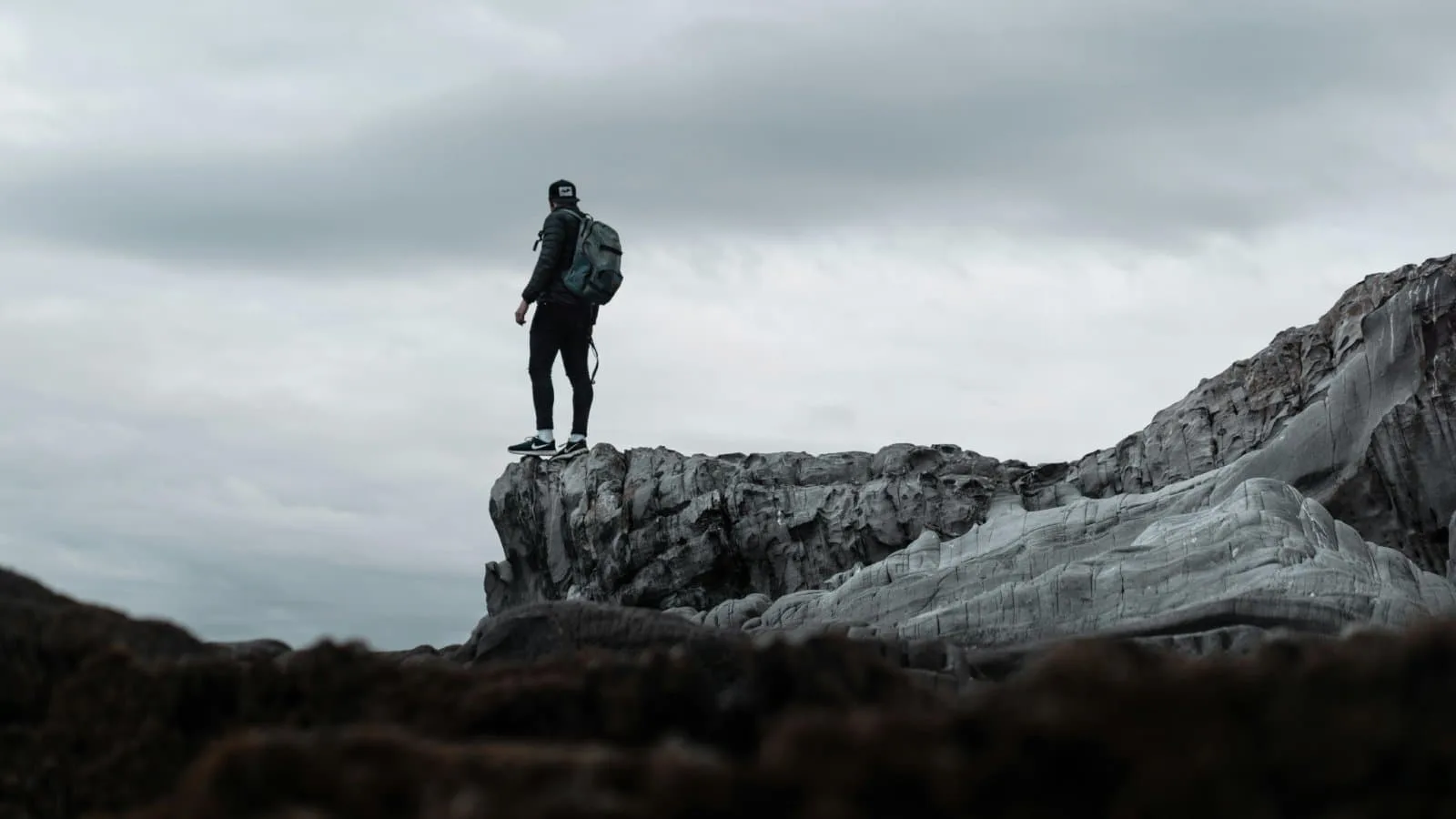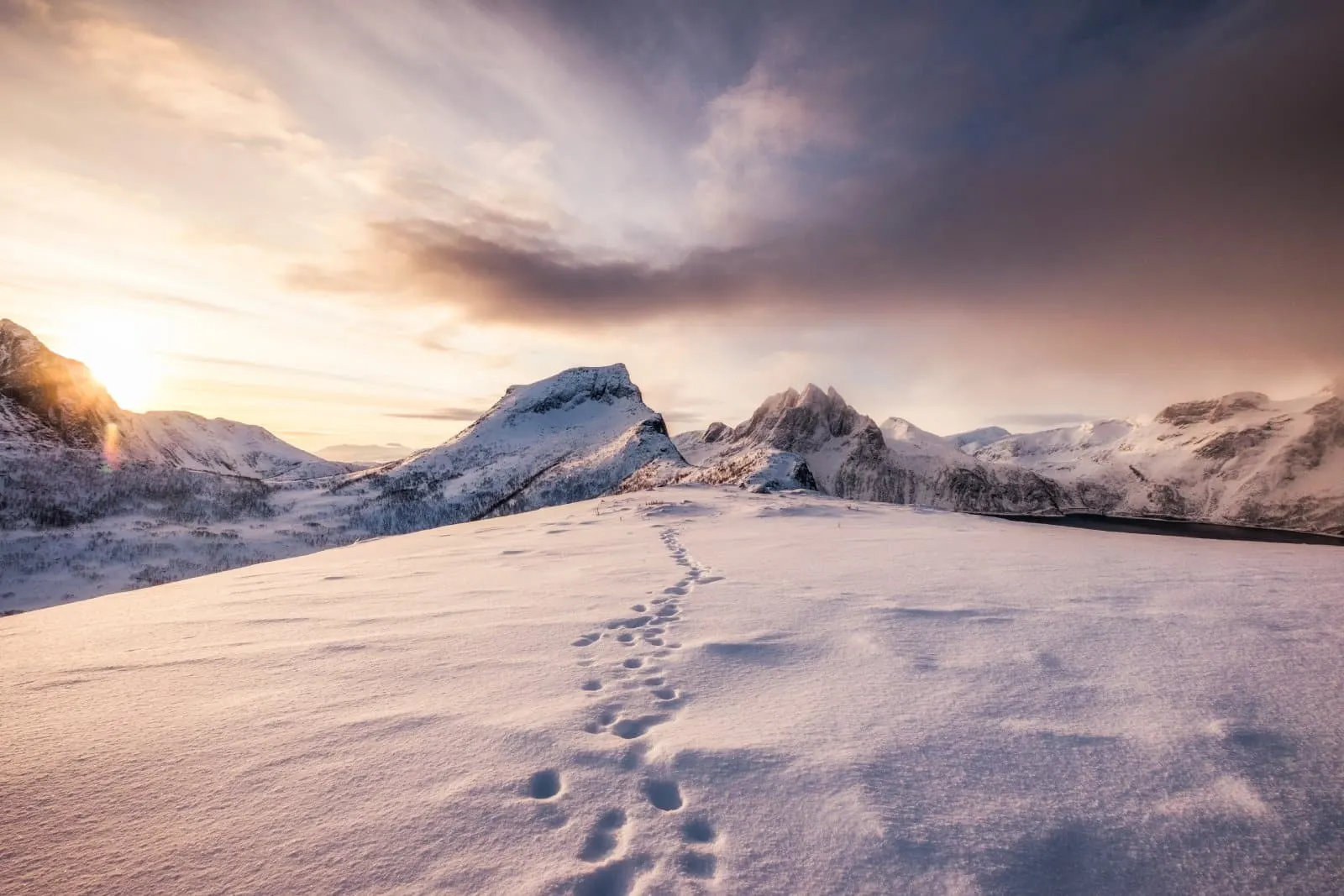The Arctic, a pristine and fragile ecosystem, beckons as one of the last frontiers for adventurous travelers. However, exploring this remote region requires a commitment to sustainability and ethical practices. This guide explores how to embark on polar adventures responsibly, ensuring minimal impact on the delicate Arctic environment and indigenous communities.
Sustainable Arctic Cruises

Image Credit: Shutterstock / Evannovostro
Arctic cruises offer a unique way to experience the region’s majestic icebergs, wildlife, and remote landscapes. Opt for small expedition ships that practice sustainable tourism, limiting passenger numbers to reduce environmental impact. These cruises often include educational programs about Arctic ecology and climate change, enhancing your understanding of the region’s fragility.
Insider’s Tip: Choose a cruise line that is a member of the Association of Arctic Expedition Cruise Operators (AECO), which promotes responsible, environmentally friendly, and safe tourism in the Arctic.
Wildlife Watching

Image Credit: Shutterstock / aceshot1
The Arctic is home to iconic species like polar bears, walruses, and various seabirds. Engage in wildlife-watching activities that prioritize animal welfare and conservation. Always maintain a respectful distance to avoid disturbing the animals, and choose tour operators that adhere to strict wildlife viewing guidelines.
Insider’s Tip: Bring binoculars and a good zoom lens for your camera to enjoy wildlife sightings without getting too close.
Visiting Indigenous Communities

Image Credit: Shutterstock / evgenii mitroshin
Many Arctic expeditions include visits to indigenous communities. These interactions should be approached with respect and sensitivity. Engage with local guides who can provide authentic and respectful cultural exchanges. Purchasing local handicrafts directly from artisans can support the community economically.
Insider’s Tip: Learn about the customs and traditions of the indigenous communities before your visit to show respect and enhance your understanding of their culture.
Arctic Hiking and Trekking

Image Credit: Shutterstock / czechexplorerphotography
Exploring the Arctic on foot allows for a deeper connection with the landscape. Stick to established trails to minimize your impact on the fragile tundra. Always hike with a guide who knows the area and can ensure your safety in this unpredictable environment.
Insider’s Tip: Wear sturdy, waterproof boots and dress in layers to adapt to the rapidly changing Arctic weather conditions.
Kayaking and Paddleboarding

Image Credit: Shutterstock / Alexey Seafarer
Kayaking and paddleboarding provide an intimate way to explore the Arctic’s waterways and ice formations. These low-impact activities allow you to experience the silence and grandeur of the Arctic without disturbing its tranquility.
Insider’s Tip: Ensure you are accompanied by an experienced guide who can navigate safely through ice and wildlife areas.
Photography Expeditions

Image Credit: Shutterstock / Song_about_summer
The Arctic offers breathtaking landscapes and wildlife, making it a dream destination for photographers. Participate in photography tours that emphasize ethical practices, ensuring that capturing the perfect shot doesn’t harm the environment or wildlife.
Insider’s Tip: Invest in a good telephoto lens to capture wildlife from a distance, respecting their space and natural behavior.
How To Get There

Image Credit: Shutterstock / JBFX
Accessing the Arctic typically involves flying to gateway cities like Tromsø in Norway or Reykjavik in Iceland, followed by smaller flights or expedition cruises to more remote areas. Some regions are also accessible via Canada or Russia, depending on your specific destination within the Arctic.
Best Time To Travel

Image Credit: Pexels / Gantas Vaiciulenas
The best time to visit the Arctic is during the summer months, from June to August, when the ice recedes, and wildlife is more active. This period offers milder weather and longer daylight hours, known as the Midnight Sun, providing unique opportunities for exploration.
1. Svalbard, Norway

Image Credit: Shutterstock / Kylie Nicholson
Svalbard, situated halfway between Norway and the North Pole, offers a unique Arctic experience with its stark landscapes and abundant wildlife. This remote archipelago is a haven for polar bears, reindeer, and myriad seabirds. In Svalbard, you can explore massive glaciers, old whaling stations, and the remnants of polar expeditions.
The main settlement, Longyearbyen, serves as a cultural hub with museums and restaurants, providing insights into Arctic life. Summer brings the midnight sun, ideal for wildlife watching and glacier hikes, while winter offers the surreal beauty of the Northern Lights.
Insider’s Tip: Visit during the late spring to witness the breathtaking phenomenon of the polar day, where the sun never sets.
How To Get There: Regular flights are available from Oslo or Tromso to Longyearbyen, the administrative center of Svalbard.
2. Ilulissat Icefjord, Greenland

Image Credit: Shutterstock / Cavan-Images
Ilulissat Icefjord, a UNESCO World Heritage site, is renowned for its colossal icebergs, birthed from one of the fastest and most active glaciers in the world, Sermeq Kujalleq. The town of Ilulissat offers a blend of Inuit culture and modern Greenlandic life.
Here, you can embark on boat tours to navigate among towering icebergs, hike along the Icefjord to appreciate the scale of these icy giants, or visit local museums to delve into Greenland’s history and the science behind glaciers and climate change.
Insider’s Tip: For a truly immersive experience, take a midnight sun hike along the Icefjord, offering spectacular views and photographic opportunities.
How To Get There: Fly to Ilulissat via Kangerlussuaq from Reykjavik or Copenhagen.
3. Baffin Island, Canada

Image Credit: Shutterstock / Ed Dods
Baffin Island, in the Canadian Arctic, is a land of dramatic fjords, towering peaks, and expansive tundra. It’s home to Inuit communities that maintain a strong connection to the land and traditional ways of life. Activities include dog sledding, witnessing the Northern Lights, and exploring Auyuittuq National Park, known for its rugged beauty and iconic peaks like Mount Thor. The island also offers opportunities for encounters with Arctic wildlife, including narwhals and polar bears.
Insider’s Tip: Participate in a community-led tour to gain authentic insights into Inuit culture and traditions.
How To Get There: Access Baffin Island via flights from Ottawa, Montreal, or Nunavut’s capital, Iqaluit.
4. Franz Josef Land, Russia

Image Credit: Shutterstock / Alexey Seafarer
Franz Josef Land, a remote Russian archipelago, is a place of stark beauty and profound isolation. This group of islands in the northeastern Barents Sea is almost entirely glaciated. It hosts a diverse range of Arctic wildlife. The archipelago is also rich in polar exploration history, with well-preserved historical sites.
Visiting Franz Josef Land involves navigating through pack ice and exploring its rugged terrain, making it a destination for the true adventure seeker.
Insider’s Tip: Opt for an expedition cruise that includes expert lectures on the region’s geology, wildlife, and history for a comprehensive Arctic experience.
How To Get There: Expedition cruises to Franz Josef Land typically depart from Murmansk, Russia, accessible by flight from Moscow or St. Petersburg.
5. Tromso, Norway

Image Credit: Shutterstock / Daniela Baumann
Tromso, located above the Arctic Circle, is known as the ‘Paris of the North.’ This vibrant city offers a mix of Arctic adventures, rich history, and a lively cultural scene. Tromso is a prime location for Northern Lights excursions in the winter and midnight sun experiences in the summer.
The city is also a center for Arctic research and has several museums and institutions dedicated to the region’s natural environment and indigenous Sami culture.
Insider’s Tip: Visit the Arctic Cathedral, an architectural marvel, and attend a midnight sun concert for a unique cultural experience.
How To Get There: Tromso is accessible by air from major Norwegian cities like Oslo and Bergen.
6. The Northwest Passage, Canada

Image Credit: Shutterstock / Exclusive Aerials
The Northwest Passage, a legendary route through the Canadian Arctic Archipelago, is steeped in history and adventure. This sea route offers a unique perspective on the Arctic’s maritime heritage, indigenous cultures, and stunning landscapes. Cruising through the passage, you’ll encounter remote Inuit communities, witness diverse wildlife, and explore areas that were once the domain of historic explorers.
The journey through the Northwest Passage is a blend of adventure, education, and cultural exchange, making it a profound experience for any traveler.
Insider’s Tip: Choose a cruise that offers onboard lectures and workshops about the Arctic environment and the history of the passage for a deeper understanding of your journey.
How To Get There: Expedition cruises to the Northwest Passage typically start from cities like Ottawa or Edmonton in Canada, with onward charter flights to embarkation points.
7. Wrangel Island, Russia

Image Credit: Shutterstock / GTW
Wrangel Island, a UNESCO World Heritage site, is one of the best places in the Arctic to observe polar bears, especially during the summer when they are more active. The island also boasts a large population of Pacific walruses and is a key habitat for migratory birds. Its harsh yet beautiful landscape offers a true wilderness experience. Visiting Wrangel Island is about immersing yourself in one of the Arctic’s most important wildlife sanctuaries.
Insider’s Tip: Travel with a reputable operator that follows strict environmental guidelines to ensure your visit does not disturb the island’s delicate ecosystem.
How To Get There: Access to Wrangel Island is typically via expedition cruises departing from Anadyr or Provideniya in Russia.
8. Spitsbergen, Norway

Image Credit: Shutterstock / ginger_polina_bublik
Spitsbergen, the largest island in the Svalbard archipelago, is a destination of stark beauty and diverse ecosystems. The island offers everything from snow-covered mountains and glaciers to polar deserts and lush tundra. It’s a hub for Arctic research and a fantastic place to learn about the region’s wildlife and ecosystems. Activities include dog sledding, snowmobiling, and guided hikes, providing various ways to explore this Arctic wonderland.
Insider’s Tip: Visit during the summer for a chance to see polar bears roaming the melting ice, and consider a guided boat tour to explore the island’s fjords and glaciers.
How To Get There: Regular flights from Oslo or Tromso to Longyearbyen on Svalbard provide access to Spitsbergen.
9. The Arctic National Wildlife Refuge, USA

Image Credit: Shutterstock / ttomasek15
The Arctic National Wildlife Refuge in Alaska is one of the largest and most remote wildlife refuges in the world. It’s a place of untouched beauty, home to diverse wildlife, including caribou, polar bears, and migratory birds.
The refuge offers opportunities for hiking, wildlife photography, and experiencing the solitude of the Arctic wilderness. It’s a destination for those who seek to connect with nature in one of its most raw and unspoiled forms.
Insider’s Tip: Travel with a guide knowledgeable about the area’s wildlife and terrain to ensure a safe and informative experience.
How To Get There: Access the refuge via small aircraft from Fairbanks or other Alaskan cities, often involving bush flights into remote areas.
10. The North Pole

Image Credit: Shutterstock / B SUDARSAN PATRO
A journey to the North Pole is the epitome of Arctic exploration. This once-in-a-lifetime experience allows you to stand at the Earth’s northernmost point, a feat achieved by only a few. The journey involves traveling on icebreaker ships capable of navigating through the Arctic’s challenging ice conditions. The North Pole is a remarkable destination and a symbol of the extremes of the natural world.
Insider’s Tip: Choose a reputable expedition company that prioritizes safety and environmental responsibility for this extraordinary journey.
How To Get There: Expeditions to the North Pole typically depart from Murmansk, Russia, and involve travel aboard powerful icebreaker vessels.
The Bottom Line

Image Credit: Shutterstock / Mumemories
Each of these destinations in the Arctic offers a unique opportunity to witness the beauty and challenges of one of the world’s most extreme environments. As you plan your journey, prioritize sustainable practices and respect for the fragile ecosystems and indigenous cultures you will encounter. Your travels in the Arctic are an opportunity to witness firsthand the impacts of climate change and the importance of preserving this unique region for future generations.
Embrace the concept of ‘leave no trace’ during your Arctic journey. This means taking all your waste with you, leaving wildlife undisturbed, and ensuring your presence is as unobtrusive as possible. By traveling responsibly, you contribute to preserving the Arctic for future generations to explore and admire
More Articles Like This…
Barcelona: Discover the Top 10 Beach Clubs
2024 Global City Travel Guide – Your Passport to the World’s Top Destination Cities
Exploring Khao Yai 2024 – A Hidden Gem of Thailand
The post Embarking on Ethical Arctic Adventures – 10 Expeditions With Environmental Integrity republished on Passing Thru with permission from The Green Voyage.
Featured Image Credit: Shutterstock / online express.
For transparency, this content was partly developed with AI assistance and carefully curated by an experienced editor to be informative and ensure accuracy.
Tips for Trip Success
Book Your Flight
Find an inexpensive flight by using Kayak, a favorite of ours because it regularly returns less expensive flight options from a variety of airlines.
Book Your Hotel or Special Accommodation
We are big fans of Booking.com. We like their review system and photos. If we want to see more reviews and additional booking options, we go to Expedia.
You Need Travel Insurance!
Good travel insurance means having total peace of mind. Travel insurance protects you when your medical insurance often will not and better than what you get from your credit card. It will provide comprehensive coverage should you need medical treatment or return to the United States, compensation for trip interruption, baggage loss, and other situations.Find the Perfect Insurance Plan for Your Trip
PassingThru is a participant in the Amazon Services LLC Associates Program. As an Amazon Associate I earn from qualifying purchases.
To view PassingThru’s privacy policy, click here.
